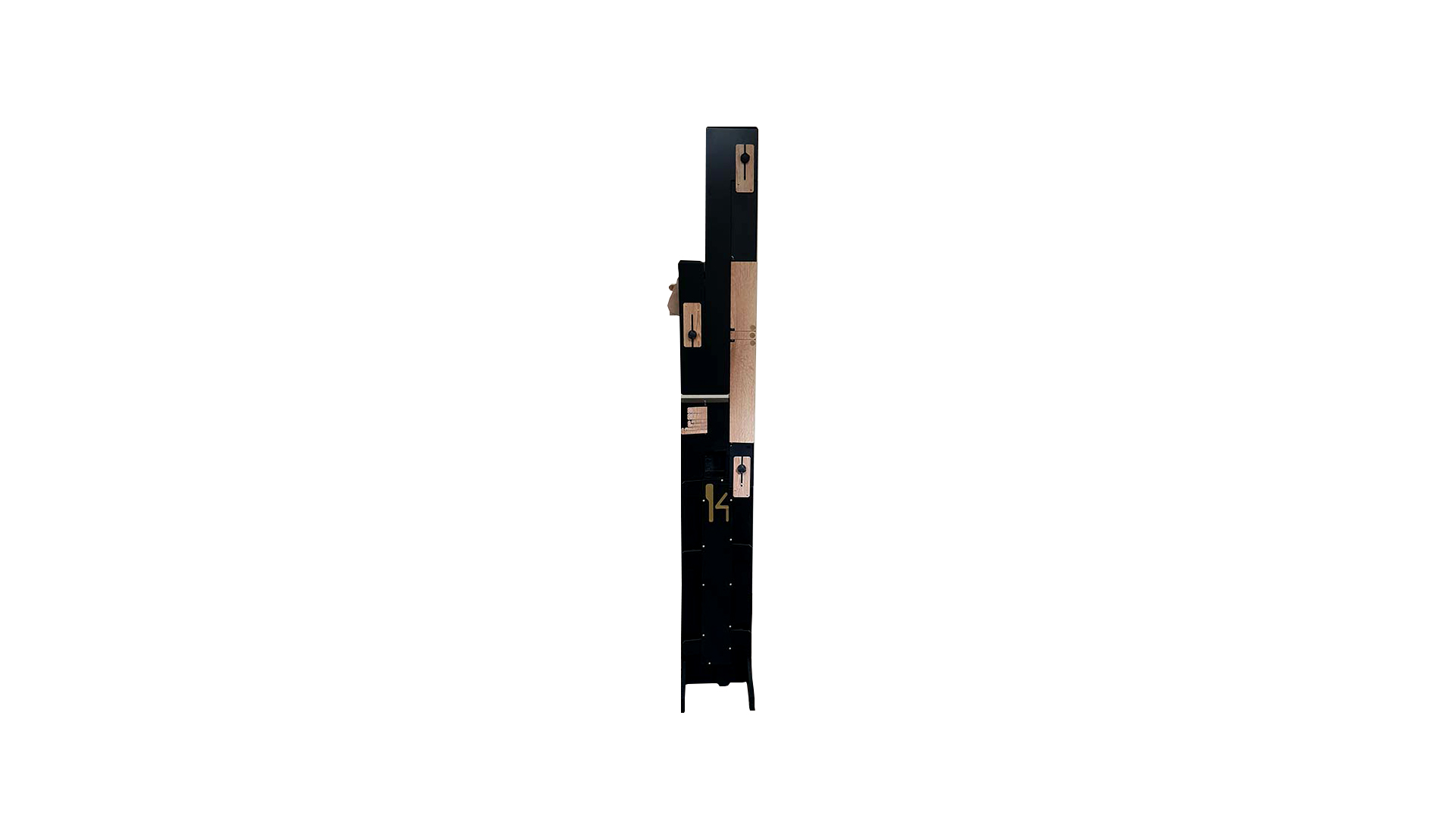1 product
Sub-Subgroßbassblockflöte SOLO, "Direct-Blow"
€9,550.00*
Blowing-type:
Direkt
|
Oberflächenbehandlung:
Naturfarben
The Sub-Sub
Great Bass Recorder
Is this
still a recorder or already a monument? We mean both. It is the largest
recorder in the world and therefore a monument. The instrument was created at
the suggestion of Simon Borutzki, the director of the Berlin Recorder
Orchestra. After recording his CD "alla turca" with subcontrabass
recorders, he asked us if we could imagine an even larger recorder. Our answer
was: "Imagine yes, but whether we can realize it...".
As always,
when people really want something, the positive conditions almost arise by
themselves. Katharina Klockmann, who wanted to realize an extraordinary project
during her studies, played a major role in turning the spontaneous idea into
what is probably the most extraordinary recorder in the world. With a sounding
length of 4.93 m, the sub-sub great bass recorder brought the record for the
largest recorder to the Paetzold (by Kunath) workshop for the second time.
Herbert Paetzold had already set a record with the development of the
sub-contrabass recorder with a sounding length of 3.60m.
How do you
build a recorder as large as the subcontrabass? For reasons of ergonomics and
transport, such long scales must of course be bent 180° in the proven Paetzold
manner. Thus, the finished instrument is "only" a little over 2.00 m
high.
Thus it fits into almost any apartment, and in concert the low notes (32 Hz)
lay a rich foundation under any (recorder) ensemble. When scaling up, the basic
principles of the original design must be reconsidered and questioned. Does one
or the other detail have to be solved technically differently for a functional
design, so that the instrument functions just as well and reliably in the large
scale as the small original? After all, the players do not grow with the size
of the instrument used. Finger and arm lengths remain the same, as does the
amount of air breathed. All these central points of ergonomics need to be
considered and designed.
For the
keys of the left hand, the proven Paetzold construction could be used. The flap
mechanism of the footpiece, however, was a point that had to be rethought. Here
it quickly became clear that we did not want to burden the instrument with the
disadvantages of long mechanical levers.
So we looked to other areas of instrument making for proven inventions. Here we
found what we were looking for - naturally - in modern organ building. The same
technology that allows the organist to conveniently control a distant pipe with
a light touch of a key is what we use in the sub-sub great bass.
The right hand keys, which would require long levers, can be played without
much effort using the organ technology. This is made possible by small
electromagnets that close and open the keys elegantly and reliably. To supply
the magnets with energy, four powerful rechargeable batteries are installed in
the sub-sub bass, which can power the instrument for weeks. Should the
batteries ever run out - which no one has experienced yet - the instrument can
be immediately supplied with power from the wall socket via the included power
supply.
A good design always has room for a Plan B, and it's especially good when you
probably won't need it. A glance at the built-in charge indicator usually
signals, "You still have enough power to play the Ring des Nibelungen at
least three times" ...
The larger
the recorders become, the more important the detail "How securely does the
instrument stand?" becomes. On the sub-sub large recorder, four small
triangles are inserted into the foot. This allows the instrument to be lifted -
the stand follows the instrument "with the foot".
A question
that is always asked: do I have enough air to play such a large instrument?
Yes, you do. That's because with a recorder, you don't blow air through the
instrument - as you do with a trumpet. With a recorder, you just excite the air
in the bore. We have refined this physical principle even further in the
sub-sub great bass recorder. The principle: You produce a very quiet - barely
audible - sound with your breathing air. This is amplified by a microphone
built in as standard. The amplifier then produces the desired volume and depth
that you - and your ensemble - won't want to miss.
Depending
on the application, different speaker systems are used. We will be happy to
advise you on which solution is best for you. The instrument is delivered in
two cases and is therefore easy to transport.
Immerse
yourself in the moving emotional world of the lowest frequencies. The deepest
recorder in the world. The sub-sub bass. Affectionately called "The
Beast" by some players. Or just "The Monument".
Product number:
29DB
Recorderpodcast.com
Just relax and listen to the recorder maker as he gives an insight into the little secrets of recorder making and explains the special features of selected instruments.







